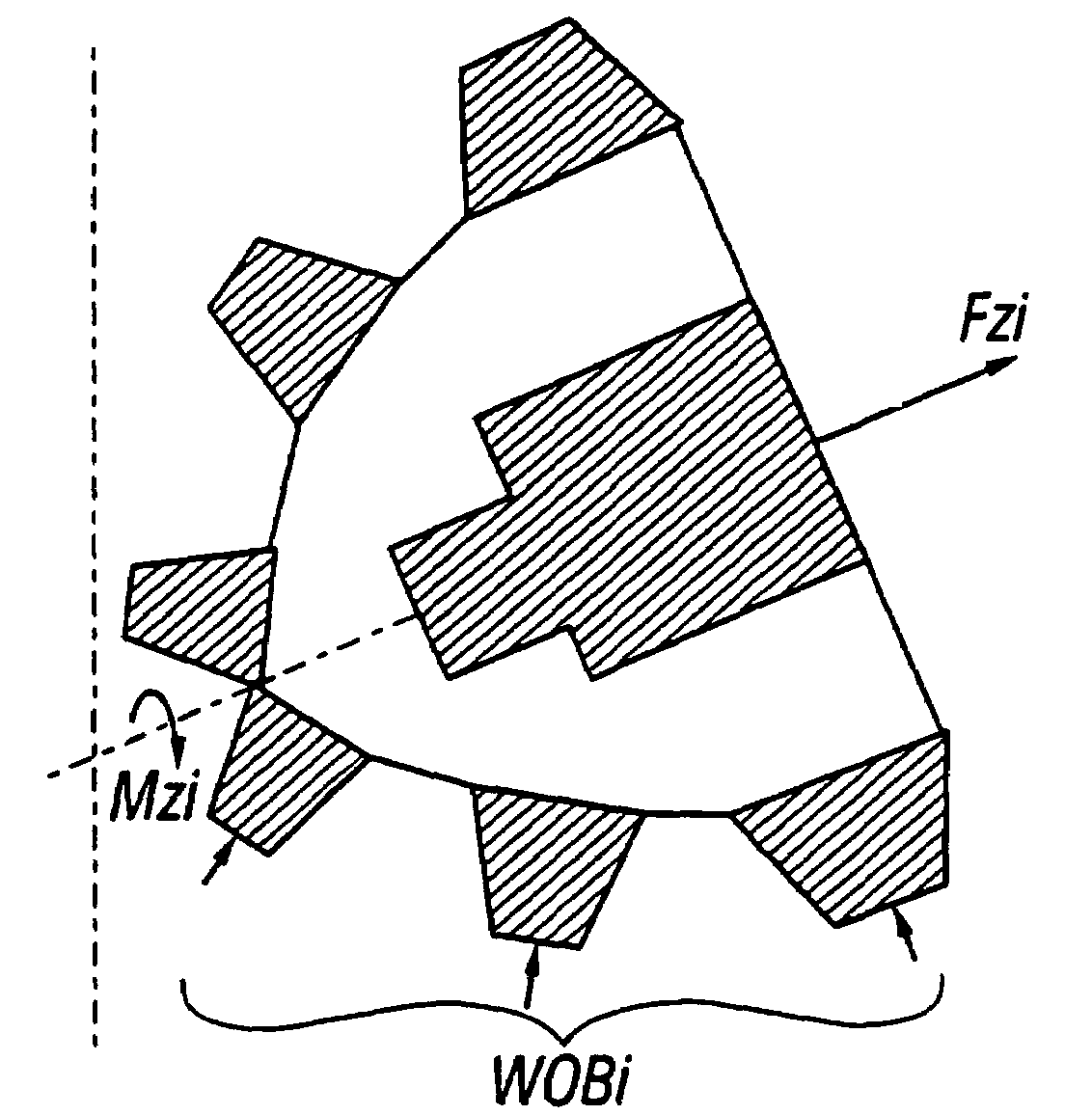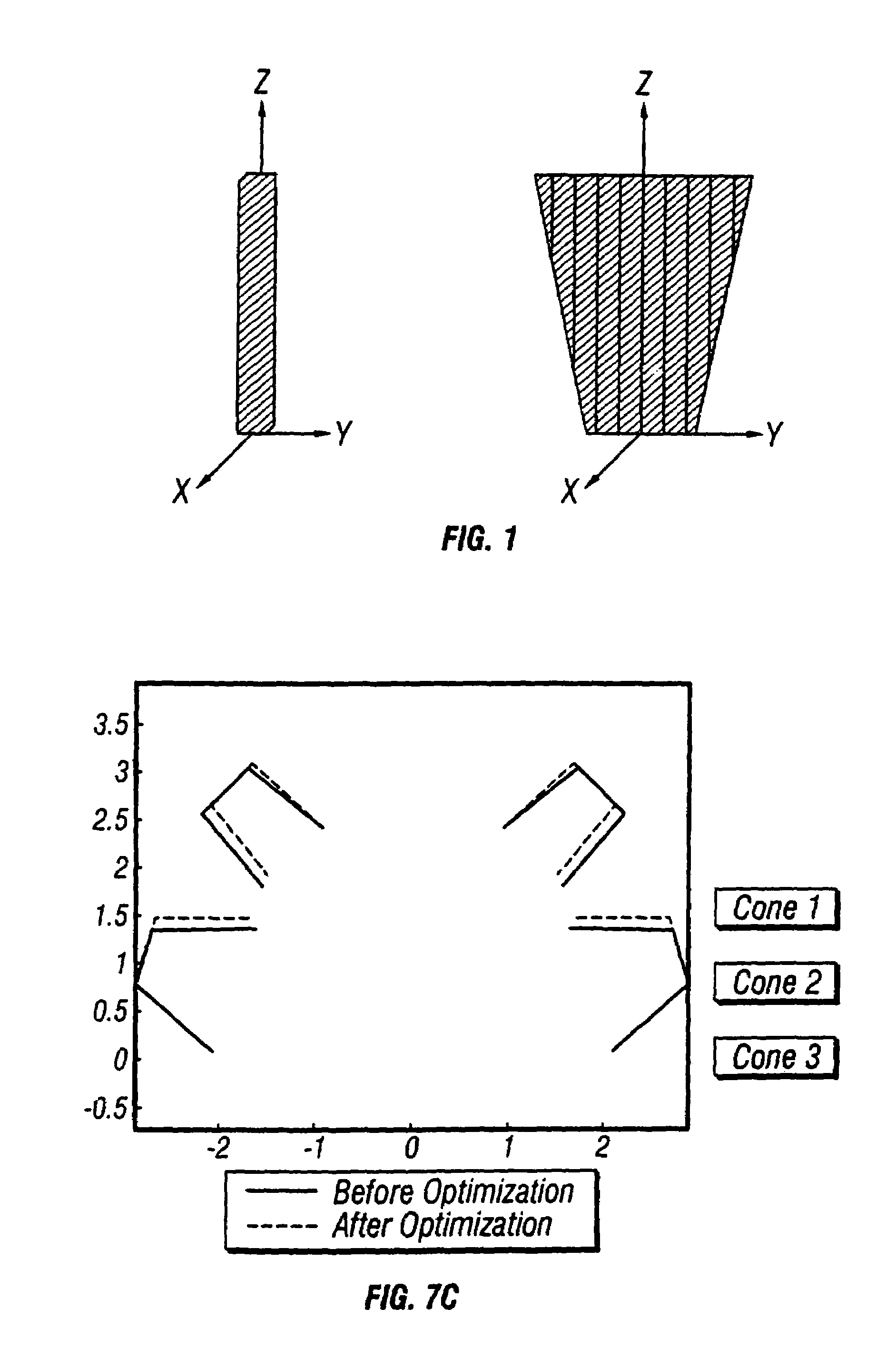Force-balanced roller-cone bits, systems, drilling methods, and design methods
a roller-cone and force-balance technology, applied in the field of downhole drilling, can solve the problems of hard teeth inducing compressive failure in formation, bit will not operate as designed, damping is not enough to prevent oscillation, etc., to achieve the effect of reducing gyration, improving drilling efficiency, and underestimating the performance of roller-cones
- Summary
- Abstract
- Description
- Claims
- Application Information
AI Technical Summary
Benefits of technology
Problems solved by technology
Method used
Image
Examples
Embodiment Construction
[0069]The numerous innovative teachings of the present application will be described with particular reference to the presently preferred embodiment (by way of example, and not of limitation).
Rock Bit Computer Model
[0070]The present invention uses a single element force-cutting relationship in order to develop the total force-cutting relationship of a cone and of an entire roller cone bit. Looking at FIG. 1, each tooth, shown on the right side, can be thought of as composed of a collection of elements, such as are shown on the left side. Each element used in the present invention has a square cross section with area Se (its cross-section on the x-y plane) and length Le (along the z axis). The force-cutting relationship for this single element may be described by:
Fze=ke*σ*Se (1)
Fxe=μx*Fze (2)
Fye=μy*Fze (3)
where Fze is the normal force and Fxe, Fye are side forces, respectively, σ is the compressive strength, Se the cutting depth and ke, μx and μy are coefficient associated with fo...
PUM
 Login to View More
Login to View More Abstract
Description
Claims
Application Information
 Login to View More
Login to View More - R&D
- Intellectual Property
- Life Sciences
- Materials
- Tech Scout
- Unparalleled Data Quality
- Higher Quality Content
- 60% Fewer Hallucinations
Browse by: Latest US Patents, China's latest patents, Technical Efficacy Thesaurus, Application Domain, Technology Topic, Popular Technical Reports.
© 2025 PatSnap. All rights reserved.Legal|Privacy policy|Modern Slavery Act Transparency Statement|Sitemap|About US| Contact US: help@patsnap.com



